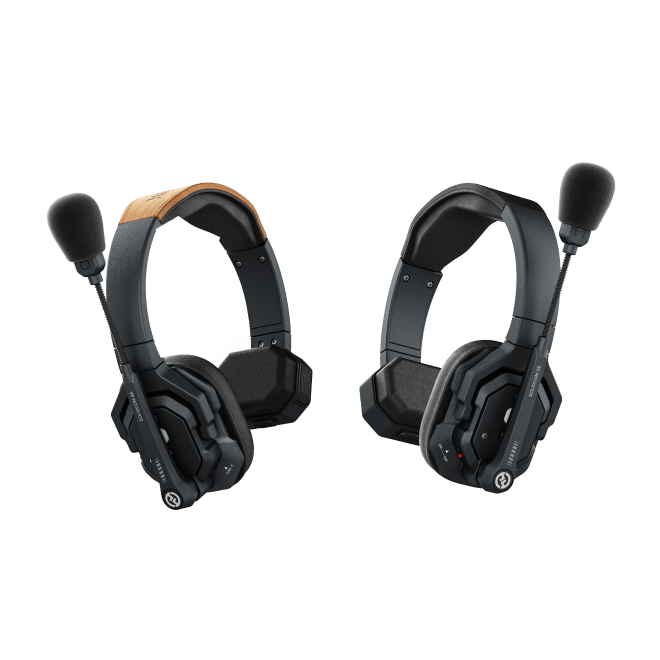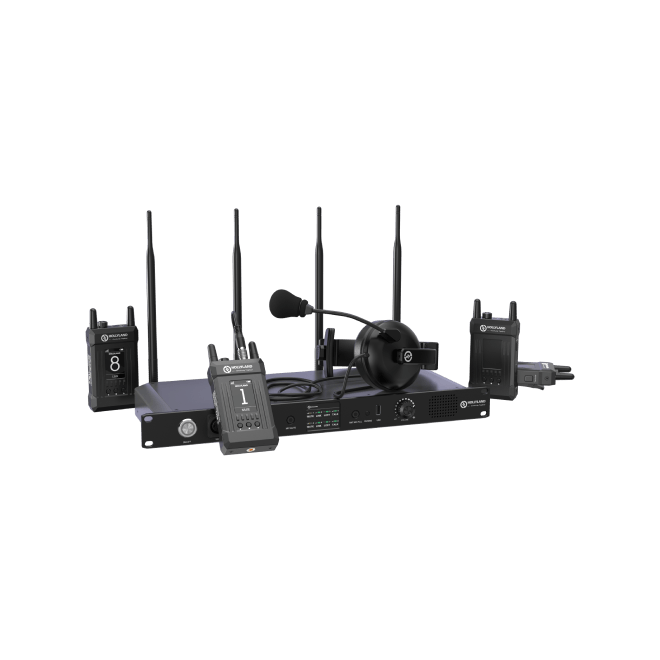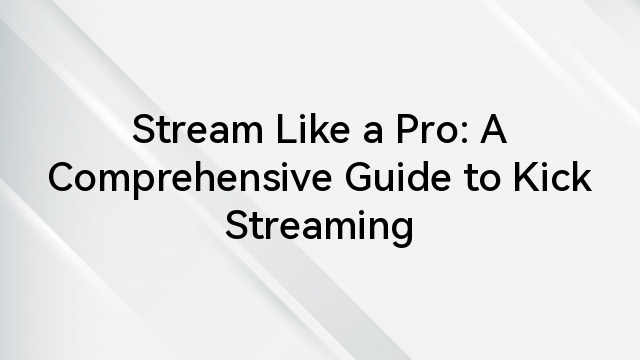Are you diving into the world of streaming and looking for the perfect microphone to elevate your audio game? A cardioid microphone could be your ideal companion, capturing rich, clear sound while minimizing background noise. Whether you’re a budding podcaster, a rising YouTube star, or a twitch maven, the right mic can make all the difference. In this listicle, we’ll explore the top cardioid microphones tailored for streaming that promise to deliver professional-quality audio, ensuring your voice is heard in crystal clear fashion. Get ready to find the mic that will help you stand out in the ever-growing streaming universe!
When selecting the best cardioid microphone for streaming, it’s essential to evaluate several key criteria to ensure high-quality audio and overall performance. Here is a set of considerations to guide your choice:
- Audio Quality: The primary purpose of a cardioid microphone is to deliver clear and rich audio. Look for microphones that offer a wide frequency response and high sensitivity to capture the full range of your voice.
- Polar Pattern: Cardioid microphones pick up sound mainly from the front, which is perfect for streaming because it helps to minimize background noise from the sides and behind.
- Connectivity: Consider how the microphone connects to your system. USB microphones are usually plug-and-play, great for ease of use, while XLR microphones may offer higher quality but require additional equipment like an audio interface.
- Build and Durability: A well-built microphone can withstand the wear and tear of regular use. Durability often correlates with reliability over time.
- Ease of Use: Features like a mute button, gain control, or a headphone jack for zero-latency monitoring can be incredibly helpful during a live stream.
- Mounting and Accessories: Check if the microphone comes with necessary accessories like a stand, shock mount, or pop filter, which can improve recording conditions and save additional cost.
- Price: It should provide value for money within your budget, balancing cost against features and performance.
These criteria will form the backbone of our listicle, ensuring we recommend the best cardioid microphones for streaming that combine performance, convenience, and quality.
| Feature/Spec | Audio-Technica AT2020USB+ | Blue Yeti USB Microphone | Shure SM7B | Rode NT-USB | Elgato Wave:3 |
|---|---|---|---|---|---|
| Average Price (as of 2023) | $120-150 | $100-130 | $390-400 | $170-200 | $130-160 |
| Microphone Type | Condenser | Condenser | Dynamic | Condenser | Condenser |
| Polar Pattern | Cardioid | Multiple (incl. Cardioid) | Cardioid | Cardioid | Cardioid |
| Connectivity | USB | USB | XLR (requires interface) | USB | USB |
| Frequency Response | 20Hz – 20kHz | 20Hz – 20kHz | 50Hz – 20kHz | 20Hz – 20kHz | 70Hz – 20kHz |
| Notable Features | Mix control; Headphone jack | Multiple patterns; Gain control; Mute button | Flat, wide-range frequency response; Internal “air suspension” shock isolation | Direct mix control; Studio quality | Clipguard technology; Capacitive mute |
Please bear in mind that the prices listed are approximate and can vary. Be sure to check current prices and go through detailed specifications and user reviews before making a purchase decision for your streaming setup.
Audio-Technica AT2020USB+
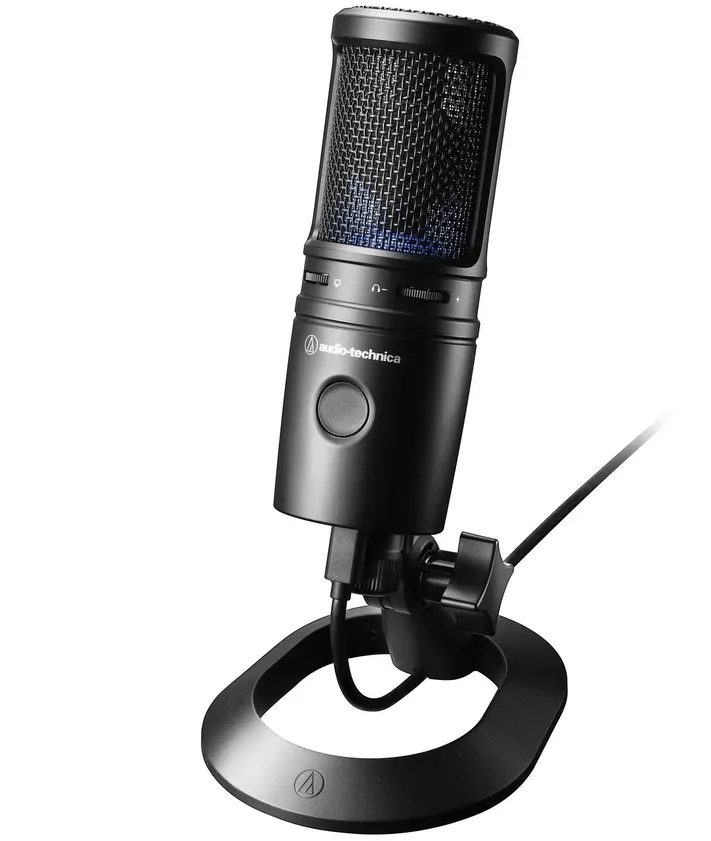
Overview
The Audio-Technica AT2020USB+ is a solid choice in the cardioid microphone lineup, particularly for streaming enthusiasts and podcasters. What sets this microphone apart is its exceptional sound clarity and the convenience of plug-and-play USB connectivity. It’s a condenser mic, which means it picks up vocal subtleties with great precision—a necessary feature for streamers who want to ensure their voice is broadcast with crystal clear detail.
In my experience, the AT2020USB+ makes no compromises on sound quality. It captures the warmth and depth of your voice, creating an intimate and professional sound environment. The design is sleek and focused on functionality, with a sturdy build that promises longevity. It includes a headphone jack with volume control allowing real-time monitoring of the microphone signal without delay, which is incredibly helpful during live sessions.
Specs
- Microphone Type: Condenser
- Polar Pattern: Cardioid
- Connection: USB
- Frequency Response: 20Hz – 20kHz
- Features: Headphone Jack with Volume Control, Mix Control
- Included Accessories: Pivoting Stand Mount, Tripod Desk Stand, Protective Pouch, USB Cable
Pros:
- The audio quality is excellent for the price range; it captures voice with clarity and depth.
- The USB connectivity makes it a breeze to set up and use, especially for non-tech-savvy streamers.
- Real-time audio monitoring through the headphone jack is a big plus.
- It’s quite versatile and works well for other applications like musical recordings or voice-over work.
Cons:
- While the build quality is robust, the plastic parts could give a less premium feel compared to its metal counterparts.
- The microphone lacks onboard gain control, which can be slightly limiting if you need quick adjustments.
- It can pick up keyboard and mouse clicks if not positioned correctly, given its sensitivity.
Price
The Audio-Technica AT2020USB+ is priced at a mid-range level, generally around the $100-150 mark. Given its sound quality and features, it offers good value for money. However, prices can fluctuate based on the retailer and any ongoing deals or discounts.
My Opinion
Out of the myriad of microphones I’ve tested for streaming, the Audio-Technica AT2020USB+ holds a special place for its reliability and the professional edge it brings to voice streams. It’s a microphone that won’t let you down, especially when you’re aiming for audio that can compete with the heavy hitters without breaking the bank. For the streamer or podcaster starting out or looking to upgrade, this microphone should definitely be on your shortlist.
Blue Yeti USB Microphone
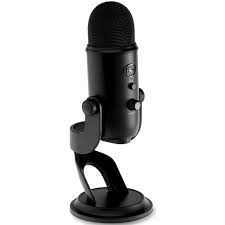
Overview:
The Blue Yeti USB Microphone is a popular choice among streamers, podcasters, and YouTubers – and for good reason. Upon unboxing, it’s clear that this microphone means business with its retro design and sturdy build. It’s almost plug-and-play; after a quick setup, you’re ready to record almost instantly on your computer with no additional gear.
In my experience, it captures clear, natural-sounding audio with a level of quality that’s a significant step up from built-in mics on laptops and cameras. It features a tri-capsule array that can record in various patterns, but its cardioid mode – which captures sound sources that are directly in front of the mic – is perfect for streaming. The Yeti provides the warmth and presence that streamers need for their voices to be heard clearly and professionally.
What sets the Blue Yeti apart for me is its versatility and ease of use. Adjusting recording patterns, microphone gain, and headphone volume is intuitive, thanks to the well-placed dials. It also has a mute button – crucial for those unexpected interruptions during a live stream.
Specs:
- Polar Patterns: Cardioid, Bidirectional, Omnidirectional, Stereo
- Frequency Response: 20Hz – 20kHz
- Sample Rate: 48kHz
- Bit Rate: 16-bit
- Connections: USB Mini B, 3.5mm headphone jack
Pros & Cons:
Pros:
- Excellent sound quality in cardioid mode
- Straightforward controls are perfect for on-the-fly adjustments
- Plug-and-play simplicity with no need for extra audio equipment
- The built-in headphone jack allows for real-time monitoring
Cons:
- It’s a bit on the larger side, which can be an issue for smaller spaces
- The desktop stand is solid but doesn’t allow for much height or angle adjustment
- Picks up background noises if not used in a well-controlled environment
Price:
The Blue Yeti USB Microphone usually retails around $129.99, but prices may vary based on sales and where you purchase it. The value you get for this price is excellent, given the professional-grade audio it delivers and the ease with which you can achieve it. However, it’s worth considering that if you’re looking to improve your streaming setup, you may need to invest in additional accessories such as a pop filter, shock mount, and potentially a boom arm for the optimal configuration.
Shure SM7B Vocal Dynamic Microphone

Introduction:
When it comes to premium streaming microphones, the Shure SM7B is an industry standard that’s frequented studios and podcasts for its exceptional sound quality and versatility. Used by professionals and enthusiasts alike, this microphone has earned its reputation for reliably capturing clear and natural vocals, which is essential for streamers who want to deliver the best listening experience to their audience.
Overview:
The Shure SM7B is not only praised for its stellar audio performance but also for its solid build and sleek, professional design. This dynamic microphone has been designed to capture your voice with precision and warmth, thanks to its flat, wide-range frequency response. It rejects electromagnetic hum superbly, which is a common pain point for streamers surrounded by various electronic devices. Furthermore, it includes both wind and pop filters which aid in minimizing plosive sounds—those pesky “p” and “b” sounds that can disrupt your audio clarity. Also, it’s remarkably versatile in terms of placement, thanks to its effective internal shock mounting that reduces handling noise.
Specs:
- Microphone Type: Dynamic
- Polar Pattern: Cardioid
- Frequency Response: 50Hz-20kHz
- Impedance: 150 ohms
- Sensitivity: -59.0 dBV/Pa
- Connector: XLR
- In-built pop filter and shock mount
- Switchable response curves for different voice types or recording conditions
Pros & Cons:
Pros:
- Renowned for its rich vocal reproduction and consistency.
- Excellent at rejecting ambient noise and electrical interferences.
- Solid, durable construction that can withstand the rigors of regular use.
- Built-in windscreen and shock mount save additional costs and keep setup clutter-free.
Cons:
- Requires a decent audio interface or preamp, as it has a low output level, adding to the overall investment.
- Less plug-and-play friendly compared to USB microphones, which might be a downside for less tech-savvy users.
- Heavier and bulkier, demanding a sturdier arm or stand for convenient placement.
Price:
As a high-end professional microphone, the Shure SM7B’s price reflects its quality, generally coming in at around $400. While this might seem steep for hobbyist streamers, for those looking to truly invest in their audio presence, it arguably offers great value for money considering its performance and durability.
Personal Opinion:
In my hands-on experience with the Shure SM7B, its vocal clarity and ability to capture the nuances of speech stand out. It feels like an investment in your streaming arsenal that’ll pay dividends, with listeners being able to discern the improved audio quality immediately. While the requirement for additional audio gear may deter some, I consider this microphone worth every step of the setup for the audio fidelity it offers. The sensation of speaking into the SM7B is one of assured quality—it’s like stepping into a professional studio, which instills additional confidence as you stream. Despite the higher price tag, when considering the longevity and timeless performance of this mic, it becomes less of a purchase and more of an investment in your streaming career.
Rode NT-USB

Overview:
Rode NT-USB is a highly versatile microphone that excels in a variety of streaming situations. Whether you’re podcasting, gaming, or conducting an online interview, the Rode NT-USB offers clear and crisp audio that is essential for maintaining professional quality in your streams. Its elegance lies in its simplicity, and despite being feature-rich, it remains accessible to users who may not have extensive technical expertise in audio equipment.
From my experience, the NT-USB’s plug-and-play functionality makes it perfect for streamers who desire a straightforward setup without sacrificing audio quality. The included pop filter is a thoughtful addition that is more than just an accessory; it significantly reduces plosives, improving your voice clarity. The build quality is also worth mentioning – it has a solid feel, reassuring users of its durability.
Specs:
- Acoustic Principle: Pressure gradient
- Active Electronics: JFET impedance converter with bipolar output buffer, A/D converter 16bit 48kHz
- Polar Pattern: Cardioid
- Frequency Range: 20Hz – 20kHz
- Maximum SPL: 110dB SPL
- Power Options: USB powered
- Output: USB Output
- Warranty: 2-year extended warranty when you register your microphone
Pros & Cons:
Pros:
- Excellent sound reproduction that captures the nuances of the human voice very well.
- The included pop shield is of high quality and is very effective, which is not always the case with included accessories.
- It has a zero-latency stereo headphone monitoring jack, which is indispensable for real-time monitoring without delay.
- Direct mix control between mic input and source output provides seamless audio blending capabilities.
- Build quality gives it a premium feel, plus it comes with a desktop tripod stand and ring mount for various mounting options.
Cons:
- It’s a bit on the pricier side compared to some entry-level microphones, which might deter budget-conscious streamers.
- Lacks onboard gain control, which means volume adjustments need to be made through your computer.
- It might pick up some background noise if not positioned correctly due to its sensitivity.
Price:
The Rode NT-USB generally retails around $169 – $199, which positions it in the mid-range category. While not the most economical option for beginners, it’s a worthwhile investment for those who value audio clarity and quality in their streaming endeavors.
In summary, the Rode NT-USB presents a balanced mixture of quality, convenience, and elegance. For streamers looking to step up their audio game without getting entangled in the complexities of professional audio setups, this microphone is a splendid choice. It embodies a plug-and-play philosophy while ensuring that the sound captured is of the highest fidelity – a testament to Rode’s commitment to quality. Despite a few minor drawbacks, it’s an acquisition that certainly won’t disappoint the discerning streamer.
Elgato Wave:3

Overview:
The Elgato Wave:3 is a sleek, modern microphone tailored for the streaming enthusiast who demands quality and ease of use. This microphone immediately captivates users with its compact design and robust construction, signaling professionalism without the intimidating setup. It’s clear upon first use that the Wave:3 is designed with content creators in mind, offering crystal-clear audio capture that enhances any stream or recording. The included software is the real star, bringing a wealth of customization and control that’s both intuitive and powerful, allowing streamers to fine-tune their audio experience with ease.
Specs:
- Capsule Type: Condenser
- Polar Pattern: Cardioid
- Connection Type: USB-C
- Frequency Response: 70Hz to 20kHz
- Sample Rate: 96kHz
- Bit Depth: 24-bit
- Built-in Pop Filter
- 0-latency Monitoring
Pros & Cons:
Pros:
- The audio quality is exceptional, with a warm, clear tone that cuts through without harshness or unnecessary bass exaggeration.
- The Wave Link software is a game-changer, affording users the flexibility to mix audio sources live and control various levels with precision.
- Its capacitive mute button is a thoughtful touch, offering instant silence without noise.
- The modern, minimalistic design not only looks good on camera but also keeps the work area uncluttered.
Cons:
- The stand, while stylish, could be more robust. Depending on the setup, some streamers might need an additional shock mount or boom arm for better positioning.
- It’s on the pricier side when compared to raw audio performance, but the included software features account for the extra cost.
- Limited to a cardioid pattern, it won’t be as versatile for those needing multi-pattern functionality.
Price:
The Elgato Wave:3 is generally priced around the mid-to-upper range for USB microphones designed for streaming. However, considering its advanced software and superb build and sound quality, it’s a valuable investment for those serious about their streaming career.
In my opinion, the Elgato Wave:3 stands out in its niche. It’s not just a microphone but a holistic audio solution for streamers. If you’re after top-notch sound and are interested in intricate audio mixing capabilities, you’ll be hard-pressed to find something that provides more bang for your buck. Whether you’re podcasting, gaming, or live streaming, this mic will elevate your production values significantly. Its ease of use and stellar performance justify the price tag, making it an excellent choice for content creators looking to make an impact with their audience.
Conclusion:
To wrap up, finding the best cardioid microphone for streaming hinges on sound quality, build, and features that suit your broadcasting needs. Whether you’re a podcaster, gamer, or live streamer, there is a cardioid mic out there that will capture your voice with clarity and precision, keeping background noise at bay. Remember, investing in the right microphone can elevate your streaming experience significantly, so consider your options carefully. Now that we’ve explored the top contenders, you’re well-equipped to make an informed decision that will resonate with your audience — literally!
FAQs:
- What is a cardioid microphone?
A cardioid microphone is a type of microphone with a pickup pattern that captures sound from the front and sides but less from the back, reducing unwanted ambient noise and focusing on sound coming from in front of the mic—ideal for streaming. - Why should streamers choose a cardioid mic over other types?
Cardioid mics are preferred by streamers because they are excellent at isolating the desired sound source (like the streamer’s voice) and reducing background noise, which creates a cleaner, more professional audio feed for viewers. - Do I need additional equipment for a cardioid microphone?
It depends on the microphone. Some cardioid mics come with built-in stands and cables, while others might require an external audio interface, boom arm, pop filter, or shock mount for optimal performance and noise reduction. Check what’s included before making a purchase.










